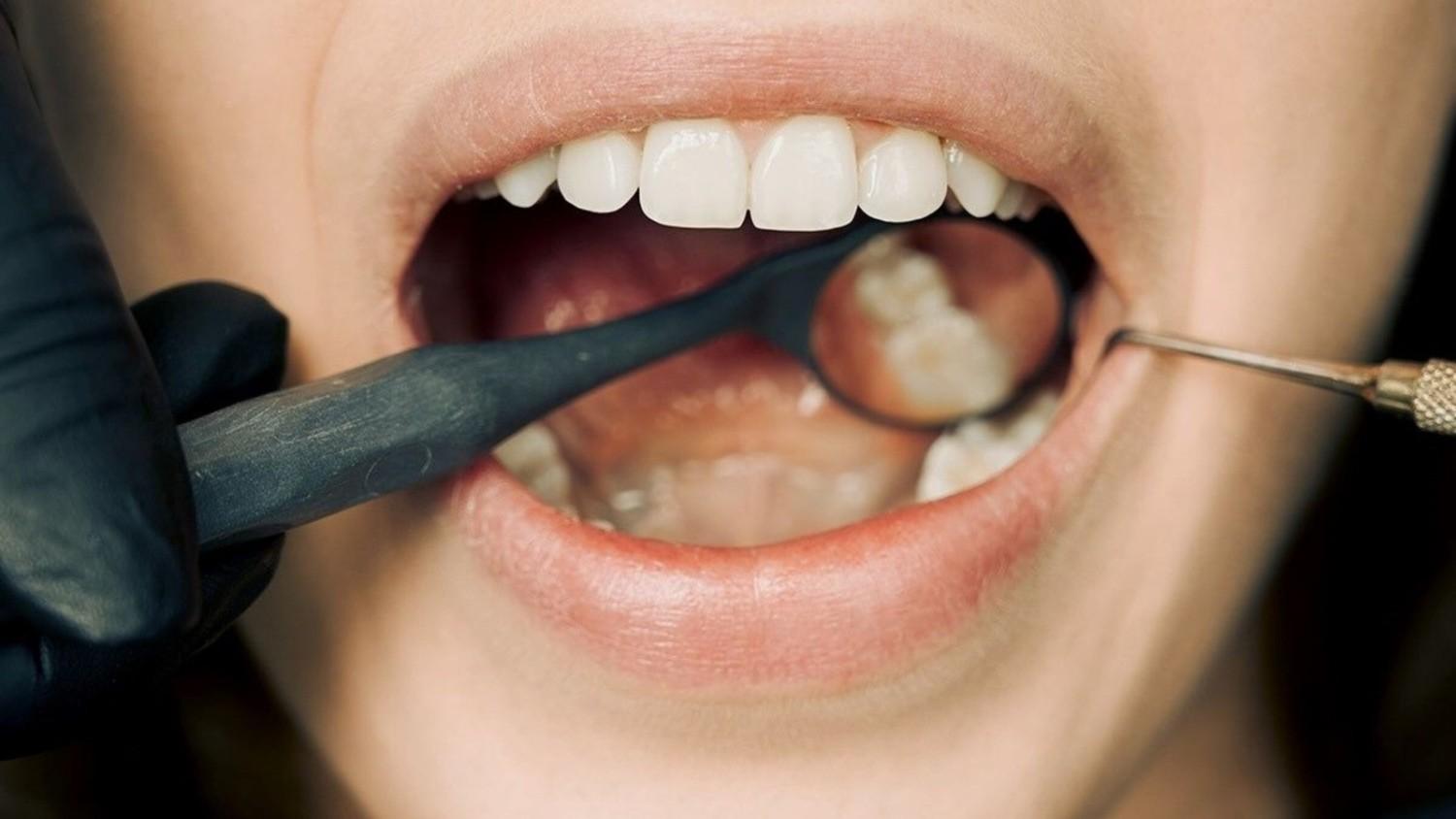Cracked Tooth vs. Fractured Tooth: What’s the Difference?

Sometimes you feel it as a sharp twinge when you chew. Other times it’s a dull, lingering ache that flares up out of nowhere. You run your tongue along your tooth, wondering what’s wrong. It’s not chipped, but something isn’t right.
You’re left trying to describe the pain to your dentist without fully understanding what’s happening yourself.
This is where it gets tricky. Most people assume “cracked” and “fractured” teeth are the same. They sound interchangeable, but in reality, they’re not. The difference matters more than you might think.
It affects how your dentist diagnoses the problem and how it should be treated. One might need a simple fix; the other could risk losing the tooth if ignored.
In this article, we’ll break it all down clearly, as we discuss further about what sets a cracked tooth apart from a fractured one, what symptoms to look out for, and how each is typically treated.
By the end, you’ll have a better understanding of what cracked tooth repair involves and why fractured teeth should be treated in specific ways.
Table of Contents
- Why Knowing the Difference Between Cracked and Fractured Teeth Matters
- What Is a Cracked Tooth and Its Distinguishing Features?
- What Is a Fractured Tooth and Its Distinguishing Features?
- Key Differences Between Cracked Teeth and Fractured Teeth
- Structural Differences in Damage Patterns and Severity
- Symptom Variations and How They Present Differently
- Diagnostic Approaches Used by Dental Professionals
- Treatment Options and Recovery Processes for Each Condition
- Essential Takeaways
Why Knowing the Difference Between Cracked and Fractured Teeth Matters
Getting the terms right isn’t just about being precise. It’s more about protecting your health. If you can tell the difference between a crack and a fracture, you’re in a better position to act quickly and avoid further damage.
Misunderstanding or ignoring the signs can delay the treatment that could save your tooth.
It also helps you make better decisions in the dental chair. Each condition calls for a different approach. Knowing which one you’re dealing with means fewer surprises, more targeted care, and a smoother recovery process.
The important thing to understand here is that the more clearly you understand the issue, the easier it is to fix it properly.
What Is a Cracked Tooth and Its Distinguishing Features?
A cracked tooth typically involves a thin split in the enamel that may extend into deeper layers of the tooth. This kind of damage usually doesn’t cause constant discomfort, but it can trigger discomfort when biting, chewing, or when exposed to temperature changes.
Cracks are often hard to spot without a dental exam because they might not be visible on the surface. Many develop slowly over time from habits like clenching, grinding, or chewing on complex objects.
Key characteristics of a cracked tooth include:
- Pain when releasing pressure while chewing
- Sensitivity to hot or cold, even without visible damage
- Discomfort that comes and goes without a clear pattern
- The tooth may appear intact on the outside, but still cause aching.
Not all cracks are emergencies, but they should never be ignored. Left alone, a crack can deepen and reach the pulp or root. That’s where problems get harder to fix.
The power of early dental intervention can often save the tooth and reduce the risk of complications.
What Is a Fractured Tooth and Its Distinguishing Features?
A fractured tooth involves a more serious level of damage, often where part of the tooth has broken off or separated. Unlike cracks, fractures usually occur suddenly due to trauma or biting something unexpectedly hard.
The damage is often visible and more likely to involve the tooth’s inner layers, including the pulp or root. This can lead to pain, swelling, and even infection if left untreated.
Common signs of a fractured tooth include:
- A portion of the tooth has chipped or broken off.
- Sharp or lingering discomfort, especially when chewing
- Swelling or bleeding around the affected area
- Sensitivity to pressure, temperature, and sweet foods
Fractures are typically more urgent than cracks. They often require immediate care to prevent infection or further structural damage.
Even minor fractures can compromise the integrity of the tooth. Acting quickly improves the chances of a full restoration.
Key Differences Between Cracked Teeth and Fractured Teeth
Cracked and fractured teeth can both affect comfort, function, and appearance, but the nature of the damage makes them distinct issues. Understanding how they differ helps you get the correct diagnosis and avoid unnecessary complications.
So what exactly sets one apart from the other when it comes to structure, symptoms, diagnosis, and treatment?
Structural Differences in Damage Patterns and Severity
Cracked teeth often involve fine lines or splits that may run vertically or diagonally, but don’t always separate the tooth into parts. These cracks typically start in the enamel and may extend inward over time, affecting deeper layers if left untreated.
The tooth usually remains whole but may become increasingly unstable if the crack deepens.
Fractured teeth, on the other hand, involve an actual break in the structure. Part of the tooth may be missing or visibly damaged. These injuries are more likely to compromise the tooth’s strength and require urgent care to prevent further deterioration or loss.
The damage can reach the pulp or root more quickly than a crack would.
Symptom Variations and How They Present Differently
Cracked teeth often cause inconsistent discomfort. You might feel an ache when biting or chewing, especially when releasing pressure.
Sensitivity to cold or sweet foods is common, but the pain can be hard to pinpoint and may come and go throughout the day.
Fractured teeth typically cause sharper, more constant throbbing, especially when a portion of the tooth is exposed. The discomfort is often immediate after trauma or biting into something hard.
Visible damage, swelling, or bleeding may also accompany a fracture, which makes it easier to recognize than a crack.
Diagnostic Approaches Used by Dental Professionals
Dentists use a variety of methods to identify whether a tooth is cracked or fractured. Cracks can be hard to detect with standard X-rays, so dentists often rely on visual inspection under magnification, dye staining, or transillumination.
These tools help reveal the extent of the crack and how far it spreads within the tooth.
Fractures tend to be more visible, but dentists still use X-rays to assess how deep the break goes and whether it involves the root. In cases related to injury or impact, trauma management also becomes part of the diagnostic process.
This enables dentists to evaluate soft tissues, adjacent teeth, and jaw stability to rule out broader damage.
Treatment Options and Recovery Processes for Each Condition
Treatment depends on the type and severity of damage. Cracked teeth are usually managed with fillings, bonding, or crowns if the structure can be preserved.
If the crack extends into the pulp, a root canal may be needed before placing a crown to stabilize the tooth.
Fractured teeth often require more immediate and aggressive care. If the pulp is involved or part of the tooth is lost, root canal therapy and a crown are typically necessary.
In cases where the fracture runs below the gumline or affects the root, extraction may be the only option. Recovery varies depending on how much structural repair is needed, but both conditions benefit from timely treatment and proper aftercare.
Essential Takeaways
Not all tooth damage is the same. Cracks and fractures differ in how they form, how they feel, and how they should be treated. Understanding these differences gives you a better shot at early intervention and lasting results.
When symptoms show up, whether it’s pressure pain, sensitivity, or visible damage, it’s worth acting quickly. Even a minor issue can become more serious without attention. A precise diagnosis by a trusted endodontist leads to a more targeted treatment plan.
Keeping your teeth strong means knowing what to look for and when to seek help. By recognizing the signs early, you’re more likely to avoid extensive repairs and protect your long-term oral health.

